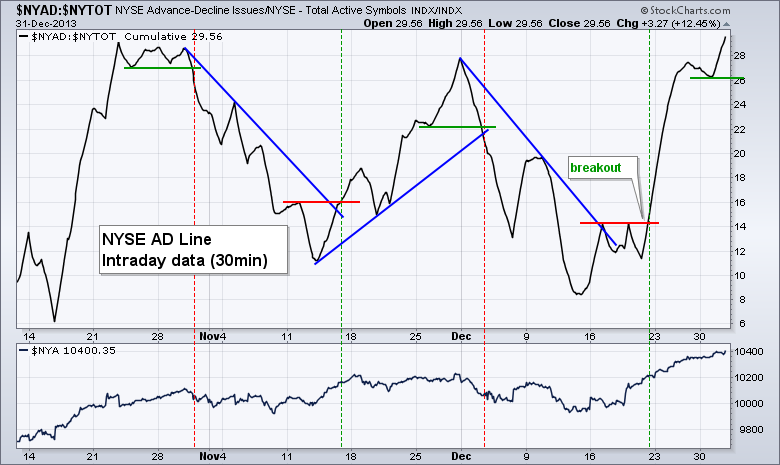Seasonality worked quite well over the last two weeks as the major index ETFs surged from December 16th to yearend. All were up 4% or more over the last eleven trading days. The Russell 2000 ETF (IWM) and Dow Diamonds (DIA) led with gains exceeding 5%. All sectors moved higher with the Technology SPDR (XLK), Industrials SPDR (XLI) and Materials SPDR (XLB) leading the charge - all were up more than 5%. The rally was broad based as the NYSE and Nasdaq AD Lines broke out and moved to new highs. Once again, the only negative is the overbought situation in the major index ETFs. As the intraday breadth charts below show, the AD Lines broke out just before Christmas and then established short-term support levels in late December. This is also true for IWM, SPY and QQQ. While a break below these support levels would argue for a corrective period, it might not last long because there is probably some pent-up demand waiting in the wings. In other words, the first dip is more likely to represent a buying opportunity than a sell signal. Also keep in mind that the bigger trend is up.
**This chart analysis is for educational purposes only, and should not
be construed as a recommendation to buy, sell or sell-short said securities**
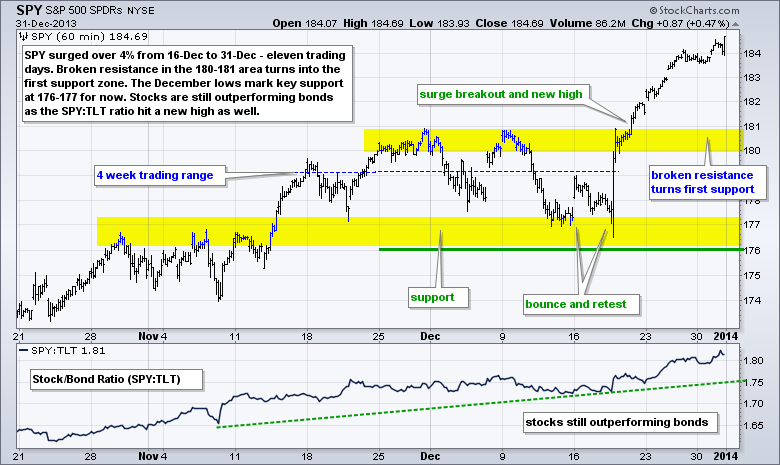
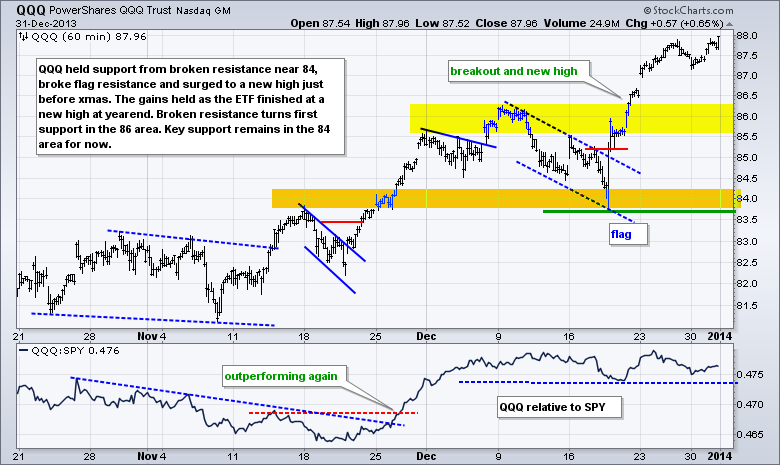
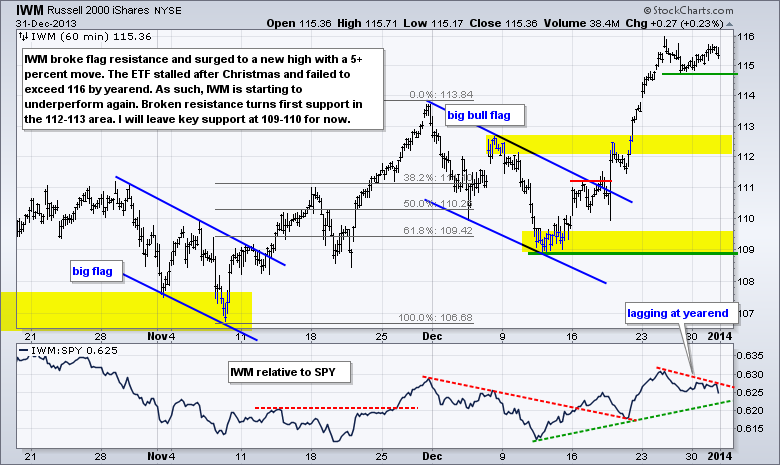
**************************************************************
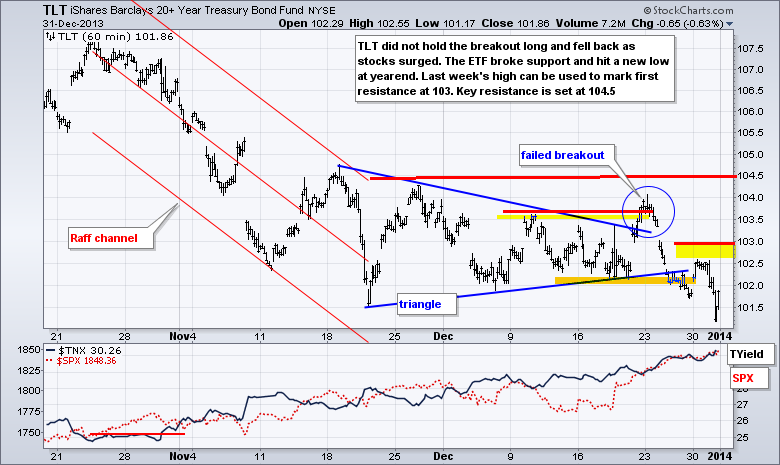
**************************************************************
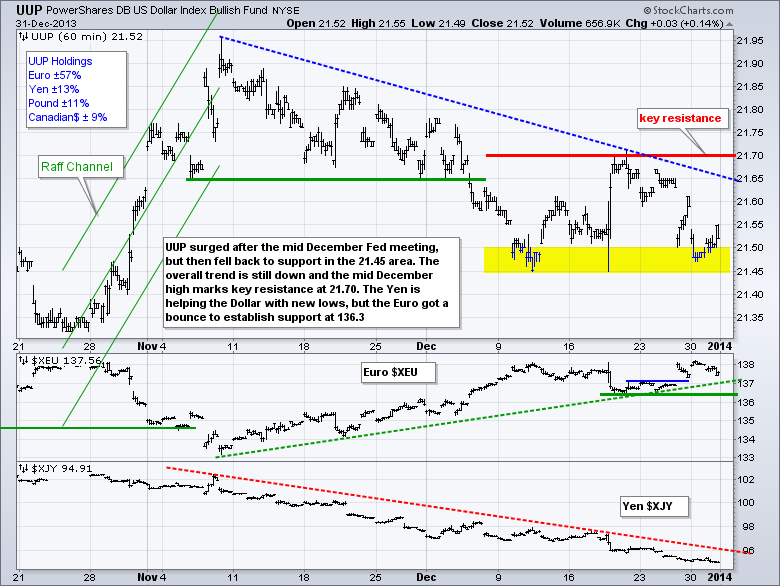
**************************************************************

**************************************************************
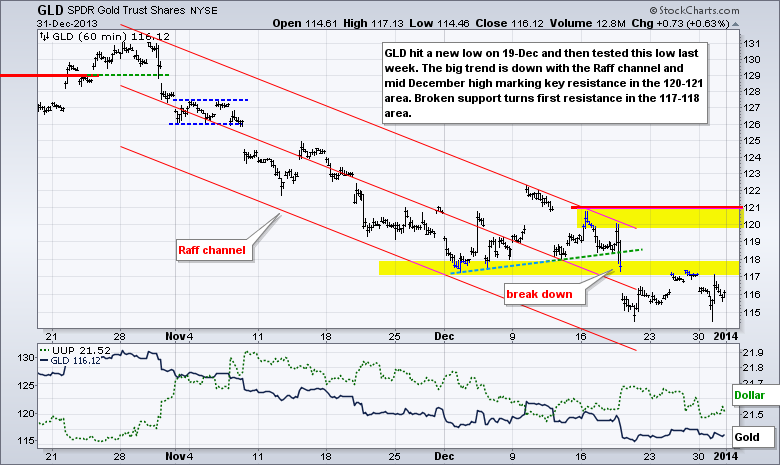
***************************************************************
Key Reports and Events (all times Eastern):
Thu - Jan 02 - 08:30 - Initial Jobless Claims
Thu - Jan 02 - 10:00 - Construction Spending
Thu - Jan 02 - 10:00 - ISM Manufacturing Index
Thu - Jan 02 - 10:30 - Natural Gas Inventories
Fri - Jan 03 - 11:00 – Crude Oil Inventories
Fri - Jan 03 - 14:00 - Auto/Truck Sales
Charts of Interest: Tuesday and Thursday
This commentary and charts-of-interest are designed to stimulate thinking. This analysis is
not a recommendation to buy, sell, hold or sell short any security (stock ETF or otherwise).
We all need to think for ourselves when it comes to trading our own accounts. First, it is
the only way to really learn. Second, we are the only ones responsible for our decisions.
Think of these charts as food for further analysis. Before making a trade, it is important
to have a plan. Plan the trade and trade the plan. Among other things, this includes setting
a trigger level, a target area and a stop-loss level. It is also important to plan for three
possible price movements: advance, decline or sideways. Have a plan for all three scenarios
BEFORE making the trade. Consider possible holding times. And finally, look at overall market
conditions and sector/industry performance.


